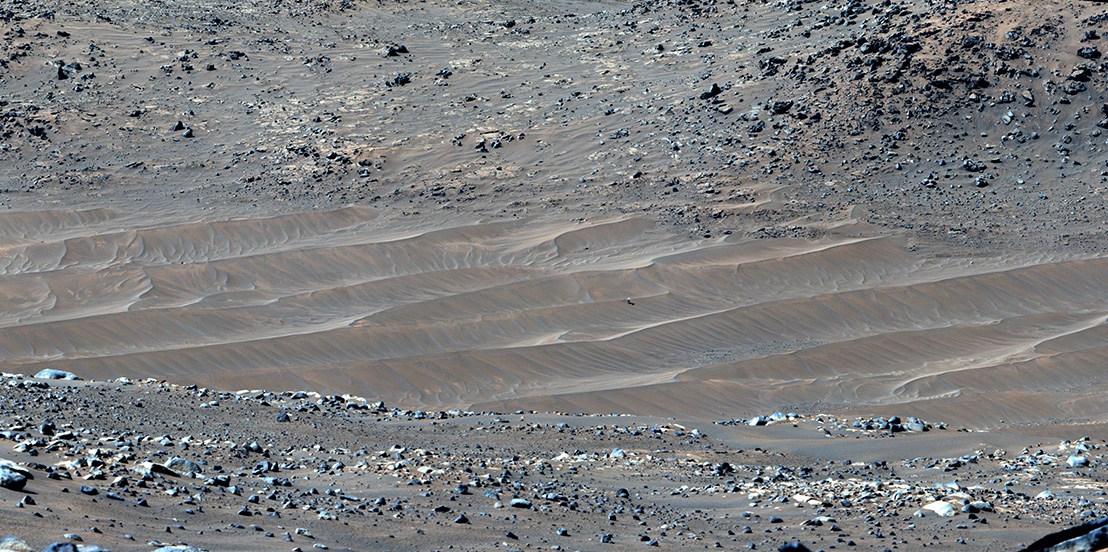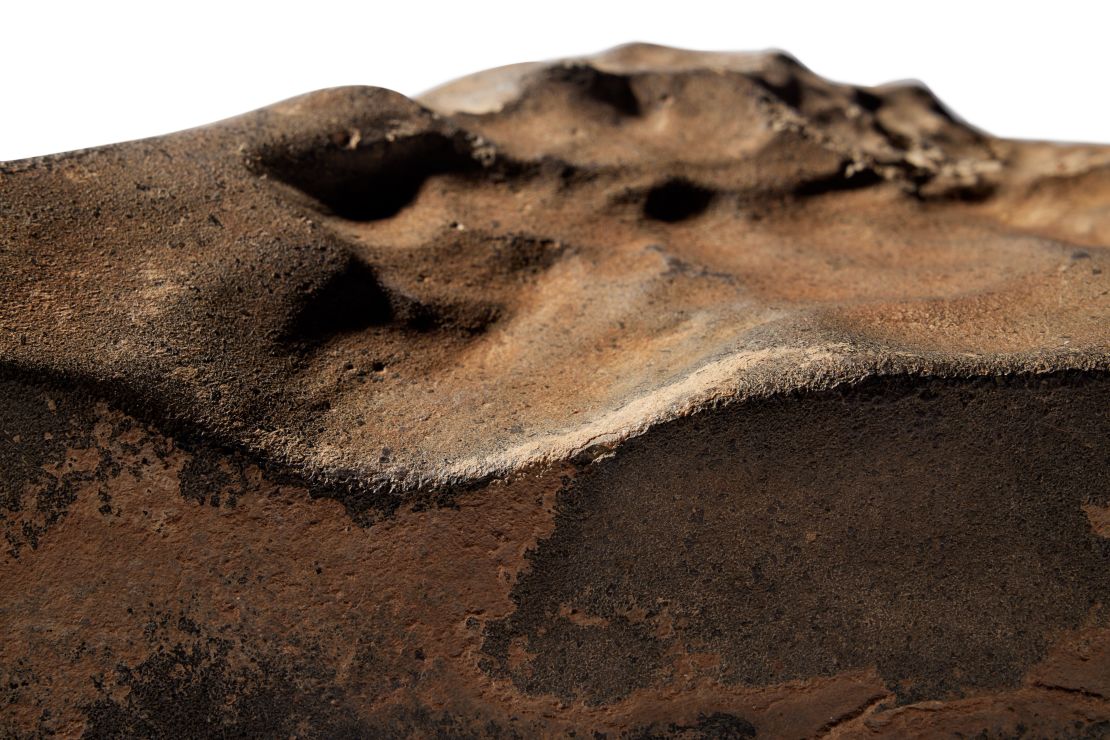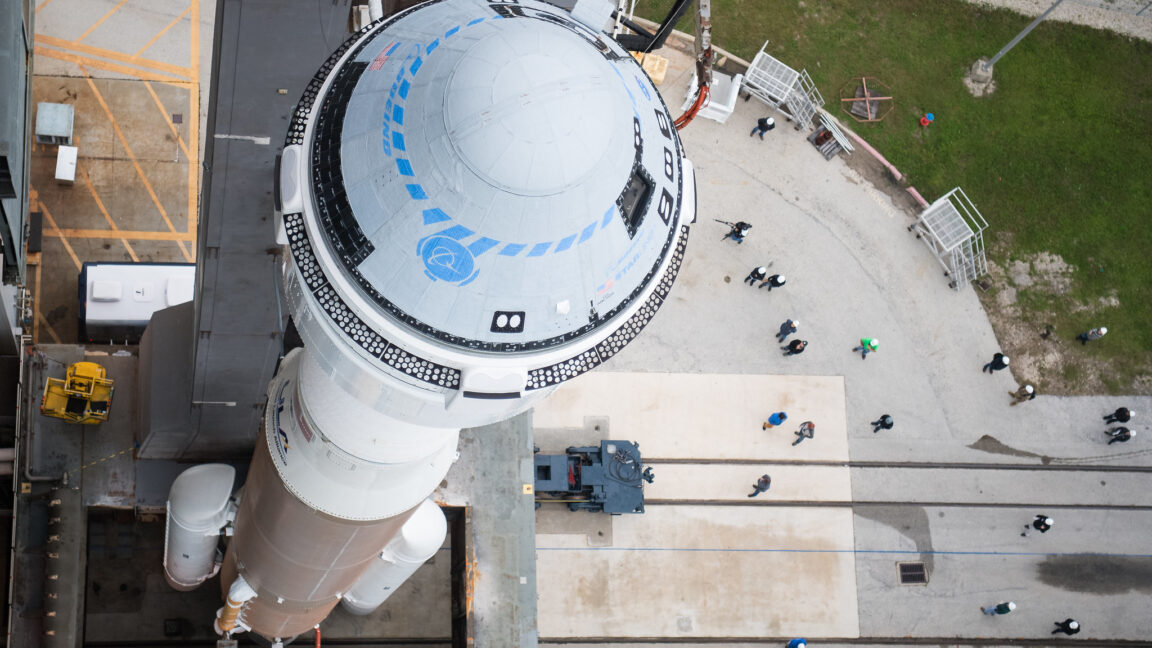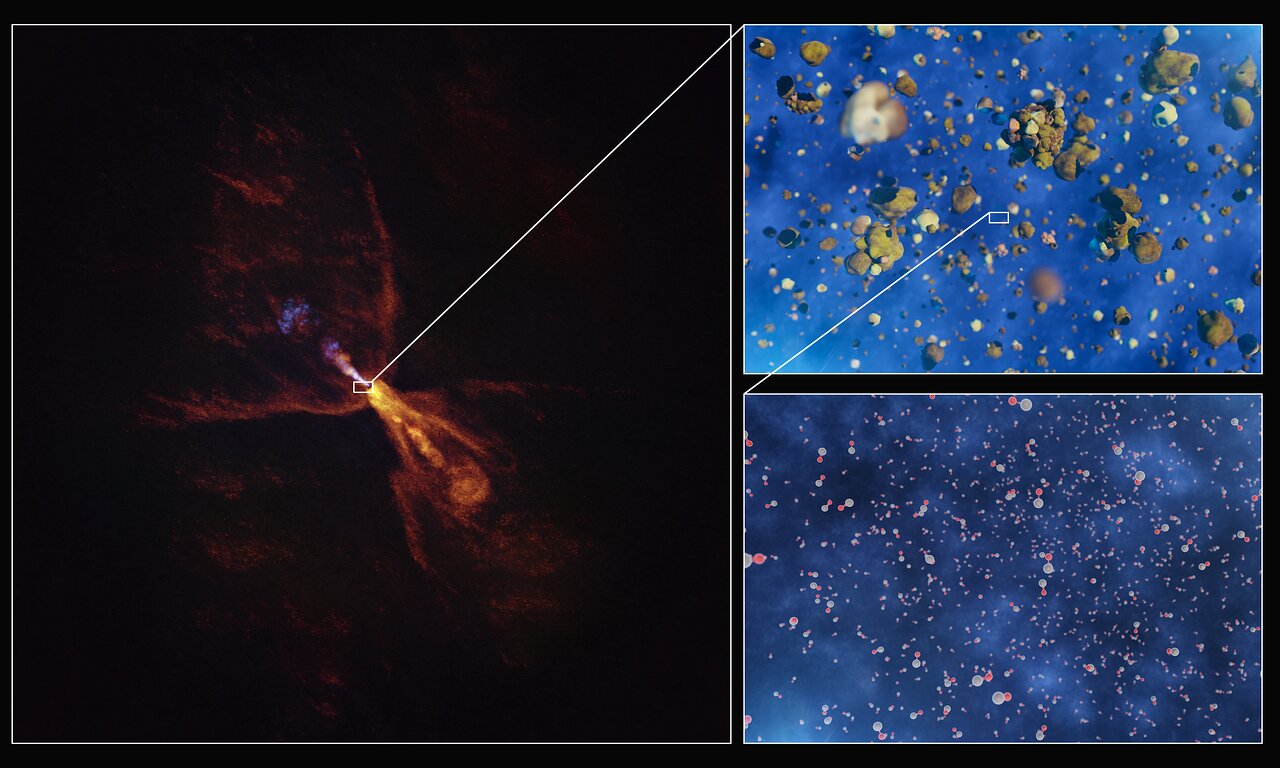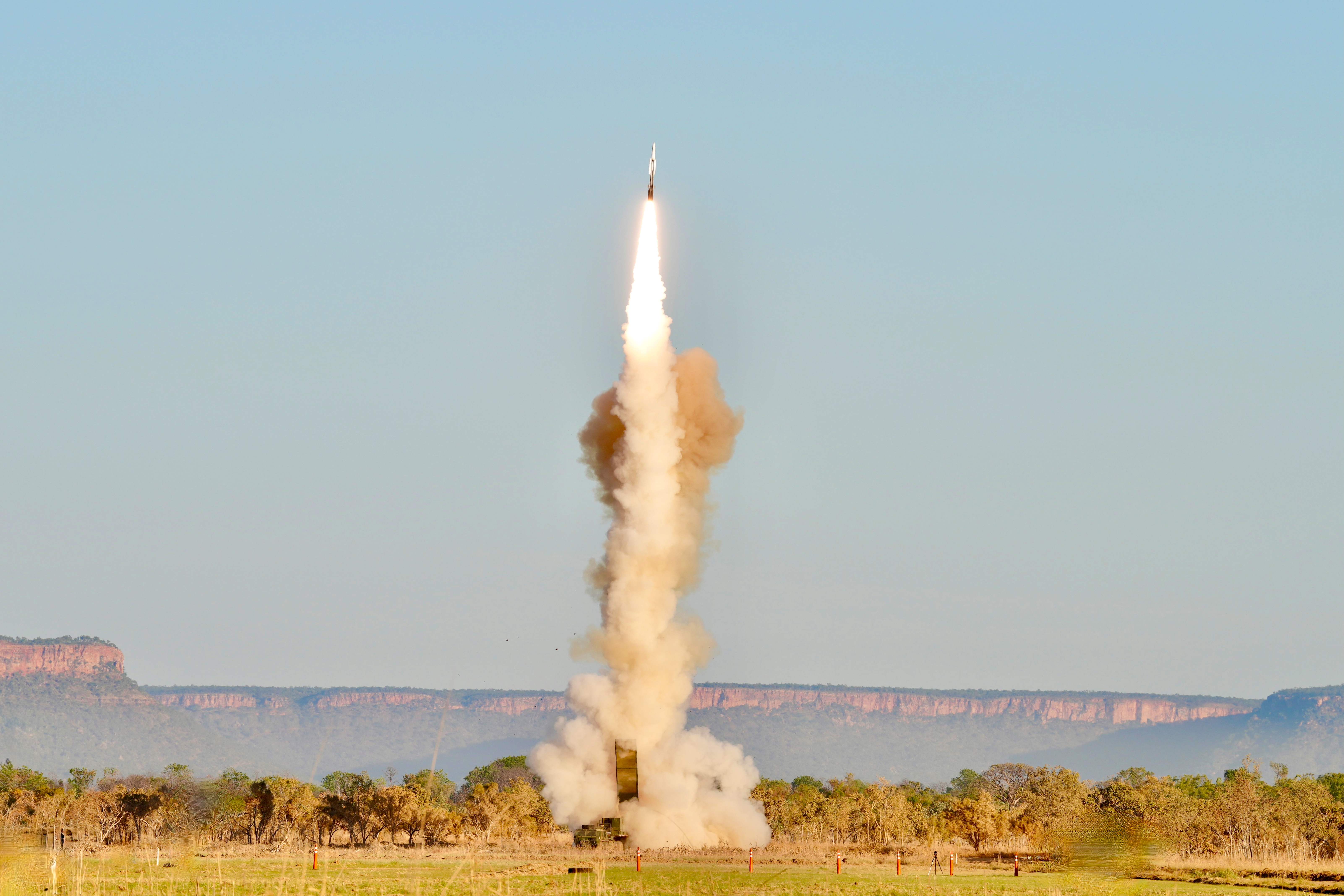Perseverance Rover, captured a mosaic on Feb. 4, 2024, featuring the damaged Ingenuity Mars Helicopter at its final airfield. The helicopter’s rotor blades were damaged on its 72nd flight on Jan. 18, 2024. The spot where the Helicopter completed its final flight has been named “Valinor Hills,” paying homage to J.R.R. Tolkien’s fantasy novels, including “The Lord of the Rings” trilogy.
Credits: NASA/JPL-Caltech/ASU/MSSS.
Download image ›
After 72 flights covering 17 kilometers, the Ingenuity helicopter bids its final goodbye. It was reported last week that Ingenuity’s mission has concluded due to rotor blade damage sustained during its last flight. Ingenuity’s journey started three years ago on the floor of Jezero Crater and will end in Neretva Vallis, a channel that once carried water into an ancient lake. Ingenuity made history as the first craft to achieve controlled and powered flight on another planet, granting the science team access to landscapes unreachable to any rover. This week, Perseverance drove to within ~450 meters of the helicopter, probably the closest encounter for the remainder of the mission. Long distance imagery of Ingenuity was captured using the Mastcam-Z instrument.
Although Ingenuity’s mission has ended, Perseverance is entering a thrilling phase of its mission. It is currently exploring the margin unit, an area on the edge of Jezero Crater with strong signatures of carbonate minerals from orbit. The rover conducted SuperCam LIBS and VISIR observations of a pitted rock named Porkchop Geyser and took Mastcam-Z images of a rubbly outcrop called Muiron Island. As the rover progresses westward, preparations are underway for the next stage. Orbital imagery of the crater rim reveals huge blocks known as ‘megabreccia,’ thought to have originated from the impact that formed Jezero Crater or possibly represent even older rocks ejected from the massive Isidis Basin to the east.
Though bidding farewell to Ingenuity is a somber moment, Perseverance’s future is bright and the science team is optimistic. The next phase will lead the rover to the mysterious crater rim, potentially providing insights into a period of Mars’ history never before seen by a rover.

